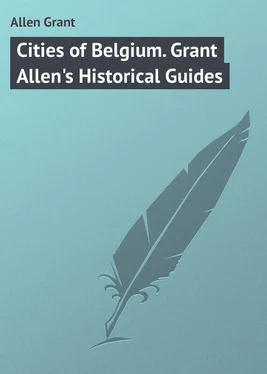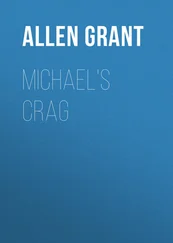Grant Allen - Cities of Belgium. Grant Allen's Historical Guides
Здесь есть возможность читать онлайн «Grant Allen - Cities of Belgium. Grant Allen's Historical Guides» — ознакомительный отрывок электронной книги совершенно бесплатно, а после прочтения отрывка купить полную версию. В некоторых случаях можно слушать аудио, скачать через торрент в формате fb2 и присутствует краткое содержание. ISBN: , Издательство: Иностранный паблик, Жанр: foreign_language, foreign_prose, на английском языке. Описание произведения, (предисловие) а так же отзывы посетителей доступны на портале библиотеки ЛибКат.
- Название:Cities of Belgium. Grant Allen's Historical Guides
- Автор:
- Издательство:Иностранный паблик
- Жанр:
- Год:неизвестен
- ISBN:http://www.gutenberg.org/ebooks/49690
- Рейтинг книги:3 / 5. Голосов: 1
-
Избранное:Добавить в избранное
- Отзывы:
-
Ваша оценка:
- 60
- 1
- 2
- 3
- 4
- 5
Cities of Belgium. Grant Allen's Historical Guides: краткое содержание, описание и аннотация
Предлагаем к чтению аннотацию, описание, краткое содержание или предисловие (зависит от того, что написал сам автор книги «Cities of Belgium. Grant Allen's Historical Guides»). Если вы не нашли необходимую информацию о книге — напишите в комментариях, мы постараемся отыскать её.
Cities of Belgium. Grant Allen's Historical Guides — читать онлайн ознакомительный отрывок
Ниже представлен текст книги, разбитый по страницам. Система сохранения места последней прочитанной страницы, позволяет с удобством читать онлайн бесплатно книгу «Cities of Belgium. Grant Allen's Historical Guides», без необходимости каждый раз заново искать на чём Вы остановились. Поставьте закладку, и сможете в любой момент перейти на страницу, на которой закончили чтение.
Интервал:
Закладка:
The Tonlieu is now fitted up as the Municipal Library. (Open daily, free, 10 to 1, and 3 to 5, Saturday and Sunday excepted.) It contains illuminated manuscripts and examples of editions printed by Colard Mansion. All round the Place are other picturesque mediæval or Renaissance houses.
The little street to the R. (diagonally) of the Tonlieu leads on to the Marché du Mercedi, now called Place de Memling, embellished by a statue of the great painter. Cross the Place diagonally to the Quai des Espagnoles (Madonna and Child in front of you) and continue along the quay, to the L., to the first bridge; there cross and go along the picturesque Quai des Augustins to the Rue Flamande. (Quaint little window to the left, as you cross the bridge.) Follow the Rue Flamande as far as the Theatre, just before reaching which you pass, right, a handsome mediæval stone mansion, (formerly the Guild of the Genoese Merchants,) with a relief over the door, representing St. George killing the Dragon, and the Princess Cleodolind looking on. At the Theatre, turn to the R., following the tram-line, and making your way back to the Grand’ Place by the Rue des Tonneliers.
(2) As early as 1362, Bruges acquired its existing size, and was surrounded by ramparts, which still in part remain. A continuous canal runs round these ramparts, and beyond it again lies an outer moat. Most of the old gateshave unhappily been destroyed, but four still exist. These may be made the objects of interesting rambles.
Go from your hotel, or from the Grand’ Place, by the Rue Flamande, as far as the Rue de l’Académie. Turn along this to the R., into the Place Jan van Eyck, noting as you pass the Bear of Bruges at the corner of the building of the old Academy. Follow the quay straight on till you reach a second canal, near the corner of which, by the Rue des Carmes, is an interesting shop with good beaten brasswork. Take the long squalid Rue des Carmes to the right, past the ugly convent of the English Ladies, with its domed church in the most painful taste of the later Renaissance (1736). The mediæval brick building on your right, at the end of the street, is the late Gothic Guild-house of the Archers of St. Sebastian. Its slender octagonal tower has a certain picturesqueness. (St. Sebastian was of course the patron of archery.) Charles II. of England (see under the Grand’ Place) was a member of this society during his exile: his bust is preserved here. So also was the Emperor Maximilian. Continue to the ramparts, and mount the first hill, crowned by a windmill, – a scene of a type familiar to us in many later Dutch and Flemish pictures. A picturesque view of Bruges is obtained from this point: the octagonal Belfry, the square tower of St. Sauveur, (the Cathedral), the tapering brick spire of Notre-Dame, with its projecting gallery and the steeple of the new church of the Madeleine are all conspicuous in views from this side. Follow the ramparts to the R., to the picturesque Porte de Ste. Croix, and on past the barracks and the little garden to the Quai des Dominicains, returning by the Park and the Place du Bourg or the Dyver.
(3) Set out by the Grand’ Place and the Place du Bourg; then follow the Rue Haute, with its interesting old houses, as far as the canal. Do not cross it, but skirt the quay on the further side, with the towers of St. Walburge and St. Gilles in front of you. At the bridge, diverge to the right, round the church of St. Anne, and the quaint little Church of Jerusalem, which contains an unimportant imitation of the Holy Sepulchre at Jerusalem, founded by a burgomaster of Bruges in the 15th century. It is just worth looking at. Return to the bridge, and follow the quay straight on to the modern Episcopal Seminary and the picturesque old Hospice de la Potterie, which now harbours the Museum of Antiquities belonging to the Hospital of St. John. I do not advise a visit. (It contains third-rate early Flemish pictures, inferior tapestry, and a few pieces of carved oak furniture. Admission, 50 c.: entrance by the door just beyond the church, No. F, 79. The church itself is worth a minute’s visit.) This walk passes many interesting old houses, which it is not necessary now to specify. Return by the Porte de Damme, and the opposite side of the same canal, to the Pont des Carmes, whence follow the pretty canal on the right to the Rue Flamande.
(4) Take the Rue St. Jacques, and go straight out to the Porte d’ Ostende, which forms an interesting picture. Cross the canal and outer moat, and traverse the long avenue, past the gasometers, as far as the navigable canal from Bruges to Ostend. Then retrace your steps to the gateway, and return by the ramparts and the Railway Station to the Rue Nord du Sablon.
These four walks will show you almost all that is externally interesting in the streets and canals of the city.
The original Palace of the Counts of Flanders, we saw, occupied the site of the Palais de Justice. Their later residence, the Cour des Princes, in a street behind the Hôtel du Commerce, has now entirely disappeared. Its site is filled by a large ornate modern building, belonging to the Sisters of the Sacred Heart, who use it as a school for girls.
The water-system of Bruges is also interesting. The original river Reye enters the town at the Minnewater, flows past the Hospital and the Dyver, and turns northward at the Bourg, running under arches till it emerges on the Place Jan van Eyck. This accounts for the apparently meaningless way this branch seems to stop short close to the statue of Van Eyck: also, for the mediæval ships unloading at the Grand’ Place. The water is now mostly diverted along the canals and the moat by the ramparts.
E. THE CHURCHES
[The original Cathedralof Bruges (St. Donatian) was destroyed, as we saw, by the French, in 1799; but the town still possesses two fine mediæval churchesof considerable pretensions, as well as several others of lesser importance. Though of very ancient foundation, the two principal churches in their existing form date only from the most flourishing period of Bruges, the 13th, 14th, and 15th centuries.
St. Salvatoror St. Sauveur, the larger, was erected into the Cathedralafter the destruction of St. Donatian, whose relics were transferred to it. To this, therefore, we will first direct ourselves.]
Go down the Rue des Pierres as far as
which replaces a very ancient church built by St. Eligius (St. Éloy) in 646.
Externally, the edifice, which is built of brick, has rather a heavy and cumbrous effect, its chief good features being the handsome square tower and the large decorated windows of the N. and S. Transepts. The Choir and its chapels have the characteristic French form of a chevêt . The main portal of the N. Transept has been robbed of its sculpture. The Choir is of the late 13th century: the Nave and Transept are mainly in the decorated style of the 14th.
The best entranceis near the tower on the N. side. Walk straight on into the body of the Nave, by the archway in the heavy tower, so as to view the internal architecture as a whole. The Naveand single Aislesare handsome and imposing, though the windows on the S. side have been despoiled of their tracery. Notice the curious high-pointed Triforium(1362), between the arches of the Nave and the windows of the Clerestory. The Choiris closed by a strikingly ugly debased Renaissance or rococo Rood-Screen, (1682), in black-and-white marble, supporting the organ. It has a statue of God the Father by the younger Quellin. The whole of the interior has been decorated afresh in somewhat gaudy polychrome by Jean Béthune. The effect is on the whole not unpleasing.
Читать дальшеИнтервал:
Закладка:
Похожие книги на «Cities of Belgium. Grant Allen's Historical Guides»
Представляем Вашему вниманию похожие книги на «Cities of Belgium. Grant Allen's Historical Guides» списком для выбора. Мы отобрали схожую по названию и смыслу литературу в надежде предоставить читателям больше вариантов отыскать новые, интересные, ещё непрочитанные произведения.
Обсуждение, отзывы о книге «Cities of Belgium. Grant Allen's Historical Guides» и просто собственные мнения читателей. Оставьте ваши комментарии, напишите, что Вы думаете о произведении, его смысле или главных героях. Укажите что конкретно понравилось, а что нет, и почему Вы так считаете.












